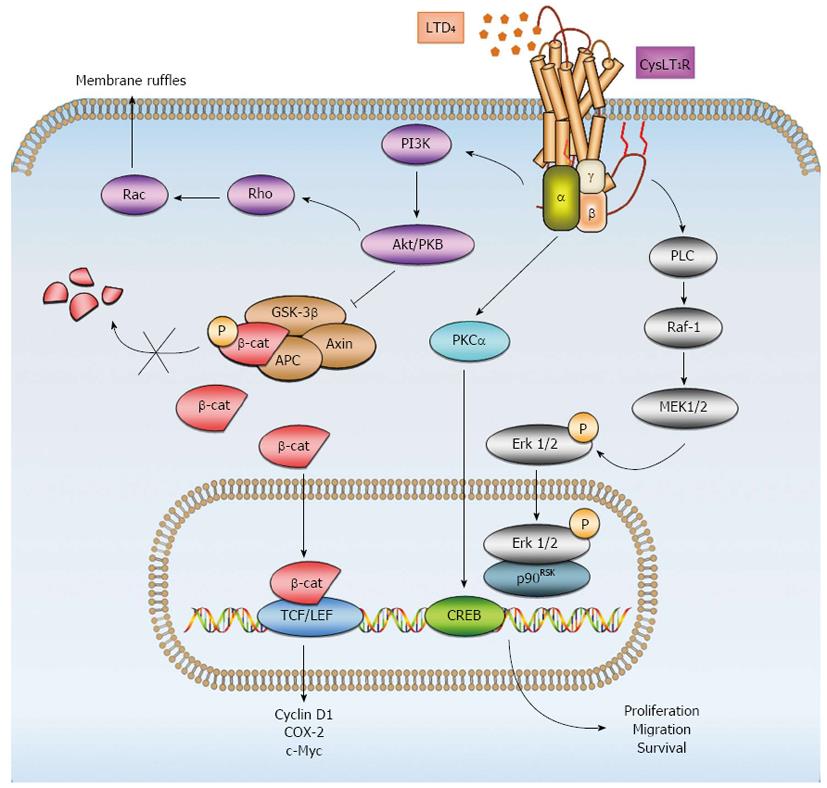Copyright
©2014 Baishideng Publishing Group Co.
World J Gastroenterol. Jan 28, 2014; 20(4): 968-977
Published online Jan 28, 2014. doi: 10.3748/wjg.v20.i4.968
Published online Jan 28, 2014. doi: 10.3748/wjg.v20.i4.968
Figure 2 Signaling pathways of LTD4 and CysLT1R.
Upon stimulation with LTD4, various downstream signaling pathways become activated. LTD4 induces cell membrane ruffles through phosphoinositide 3-kinase (PI3K) signaling, which in turn stimulates protein kinase Akt/PKB and the small GTPases Rho and Rac. Akt/PKB can inhibit glycogen synthase kinase-3 β (GSK-3β), which comprises the destruction complex for cytosolic β-catenin together with Axin and adenomatous polyposis coli (APC). Inhibition of the destruction complex leads to the accumulation of β-catenin in the cytosol and translocation to the nucleus. In the nucleus, β-catenin interacts primarily with members of the T-cell factor/lymphoid enhancer factor (TCF/LEF) family of transcription factors to activate target genes, leading to the expression of various proteins, such as cyclin D1, COX-2 and c-Myc, which contribute to diverse cellular processes, including proliferation and migration. LTD4-CysLT1R signaling also regulates cell proliferation via mitogen-activated protein kinase (MAPK)/extracellular signal-regulated kinase (Erk) pathways. LTD4-CysLT1R in turn activates phospholipase C (PLC), Raf-1 and mitogen-activated protein kinase kinase (MEK-1/2). This activation leads to the translocation of p-Erk from the cytosol to the nucleus and interaction with p90RSK, which can activate various transcription factors. Conversely, LTD4-CysLT1R mediates survival through protein kinase Cα (PKCα) and the transcription factor cAMP response element-binding protein (CREB). β-cat: β-catenin.
- Citation: Savari S, Vinnakota K, Zhang Y, Sjölander A. Cysteinyl leukotrienes and their receptors: Bridging inflammation and colorectal cancer. World J Gastroenterol 2014; 20(4): 968-977
- URL: https://www.wjgnet.com/1007-9327/full/v20/i4/968.htm
- DOI: https://dx.doi.org/10.3748/wjg.v20.i4.968









